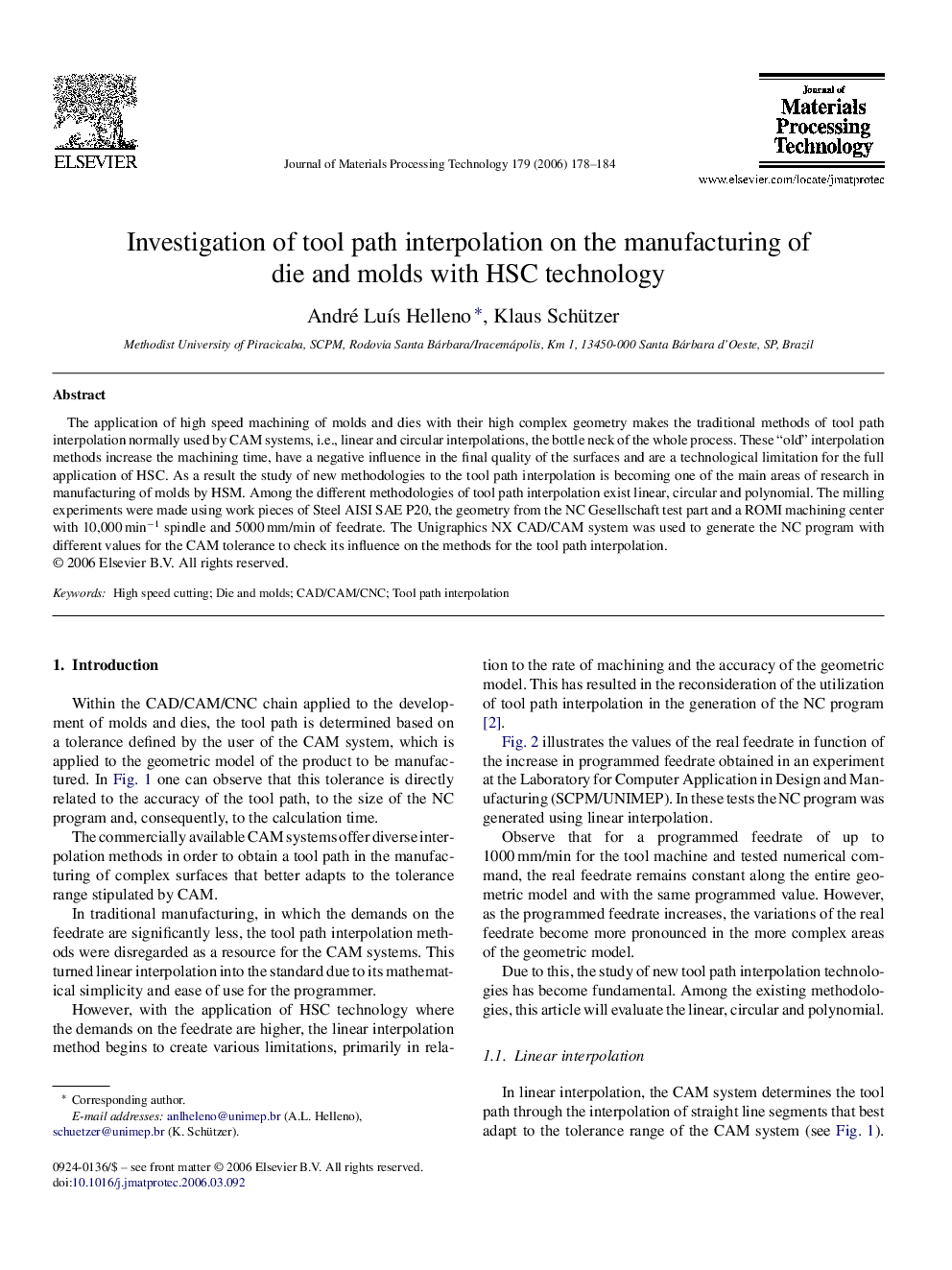| Article ID | Journal | Published Year | Pages | File Type |
|---|---|---|---|---|
| 791993 | Journal of Materials Processing Technology | 2006 | 7 Pages |
The application of high speed machining of molds and dies with their high complex geometry makes the traditional methods of tool path interpolation normally used by CAM systems, i.e., linear and circular interpolations, the bottle neck of the whole process. These “old” interpolation methods increase the machining time, have a negative influence in the final quality of the surfaces and are a technological limitation for the full application of HSC. As a result the study of new methodologies to the tool path interpolation is becoming one of the main areas of research in manufacturing of molds by HSM. Among the different methodologies of tool path interpolation exist linear, circular and polynomial. The milling experiments were made using work pieces of Steel AISI SAE P20, the geometry from the NC Gesellschaft test part and a ROMI machining center with 10,000 min−1 spindle and 5000 mm/min of feedrate. The Unigraphics NX CAD/CAM system was used to generate the NC program with different values for the CAM tolerance to check its influence on the methods for the tool path interpolation.
